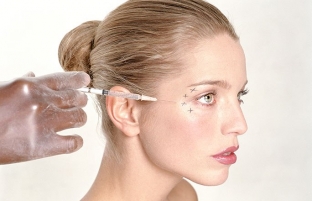What are fillers usually used for? Most cosmetologists will answer that this is an excellent tool for filling wrinkles and superficially correcting facial lines. Today, experts consider fillers as an effective tool for serious facial reconstruction. However, such a reconstruction is possible and safe only with an impeccable knowledge of the anatomical features of the face.
A speaker from Germany spoke about the peculiarities of using dermal fillers, the nuances of the location of subcutaneous fat components and their effect on the effectiveness of injections in terms of facial rejuvenation at the XIV International Symposium on Aesthetic Medicine.
Wolfgang Redka-Svoboda, MD, surgeon, international speaker, medical director of TEOXANA Germany (Germany) presented a report on the topic "The evolution of hyaluronic filler injection techniques – from wrinkle-line corrections to Global Facial Reconstruction Detailed anatomy of the fat compartments, separating septa and musculoaponeurotic system for optimal correction results".
Dermal filler treatment has changed dramatically over the past few years. Where previously the main procedure was the elimination of wrinkles by intradermal injection of hyaluronic acid, now the task is to reconstruct the face with deep injections to restore volume.
Most doctors have begun to inject into the midface and talk about the results by speaking as speakers at major conventions and doing demonstration procedures. But in reality, many of them did not know what they were doing, because they had little idea of the likely behavior of the filler in a global facial reconstruction.
That's why real experts start dissection courses on anatomical preparations by asking: "What happens to the filler and where is the best place to apply it to get a natural and lasting result?"
Features of facial fat when using dermal fillers
The scientific approach to injections in the facial area has shown that there are many aspects that have not been paid attention to before. The main discovery was the fact that fat in the face is not a homogeneous mass, but, on the contrary, is a complex structure of various fat components.
We found deep and superficial fat components that are separated from each other by the superficial muscular aponeurotic system (SMAS). The difference between the deep fat components and the superficial ones is that the deep ones are attached to the bone.
The deep fat components found in the pre-zygomatic space are the lateral and medial fat components of the orbicularis oculi muscles, while the intermaxillary space contains the deep medial components of buccal fat.
Along with the superficial muscular-aponeurotic system, there are superficial fat components. They are not attached to the bone, but are located on top of the mimic muscles and can move along with the PMAS during the procedure. It is necessary to know this when applying fillers.
Deep injections have a lifting effect in the target areas, while superficial injections should create a smooth surface over larger areas. The fact that superficial fats move with facial muscles makes it difficult to achieve a natural result when applying fillers.
Injections of dermal fillers in the most difficult areas of the face

A very difficult area for filler injections is the temporal area. For the correct application of the filler, it is necessary to know about the presence of various layers and components here, which are formed from partitions and ligaments. If the injection is superficial, there is a risk of hematomas and even vascular complications. If the injection is directed directly into the deep temporal region of the face, the filler may penetrate down to the buccal region.
Along with the restoration of volume, the periorbital region has become of great interest in the treatment of facial aging. But due to the lack of knowledge about the specifics of the anatomy of this part of the face and about determining its correct boundaries, many problems arise as a result of the work. The Tyndall effect and severe edema are the most common side effects, but cases of blindness due to vascular complications are also possible after injection into the lacrimal trough if the procedure is carried out too superficially.
Total facial reconstruction has recently become the most significant procedure in aging therapy. Various devices and techniques are used – multibolus technique, tower technique, fan technique with needles and cannulas, etc. – however, all of the above techniques had multiple injection points. However, in order to minimize trauma and obtain long-term results, the zygomatic approach using blunt cannulas and a single insertion point is considered the best way to reach all of these areas.
To understand what we can do with fillers, it is very important and absolutely necessary to know the main septa and ligaments of the face. Proper application of the preparation, taking into account the location of these important structures, can prevent its migration, improve the final aesthetic result and minimize side effects.
You may be interested in: "Facial Anatomy for Beauticians: How to Avoid Danger Zones"
Source estet-portal.com









Add a comment